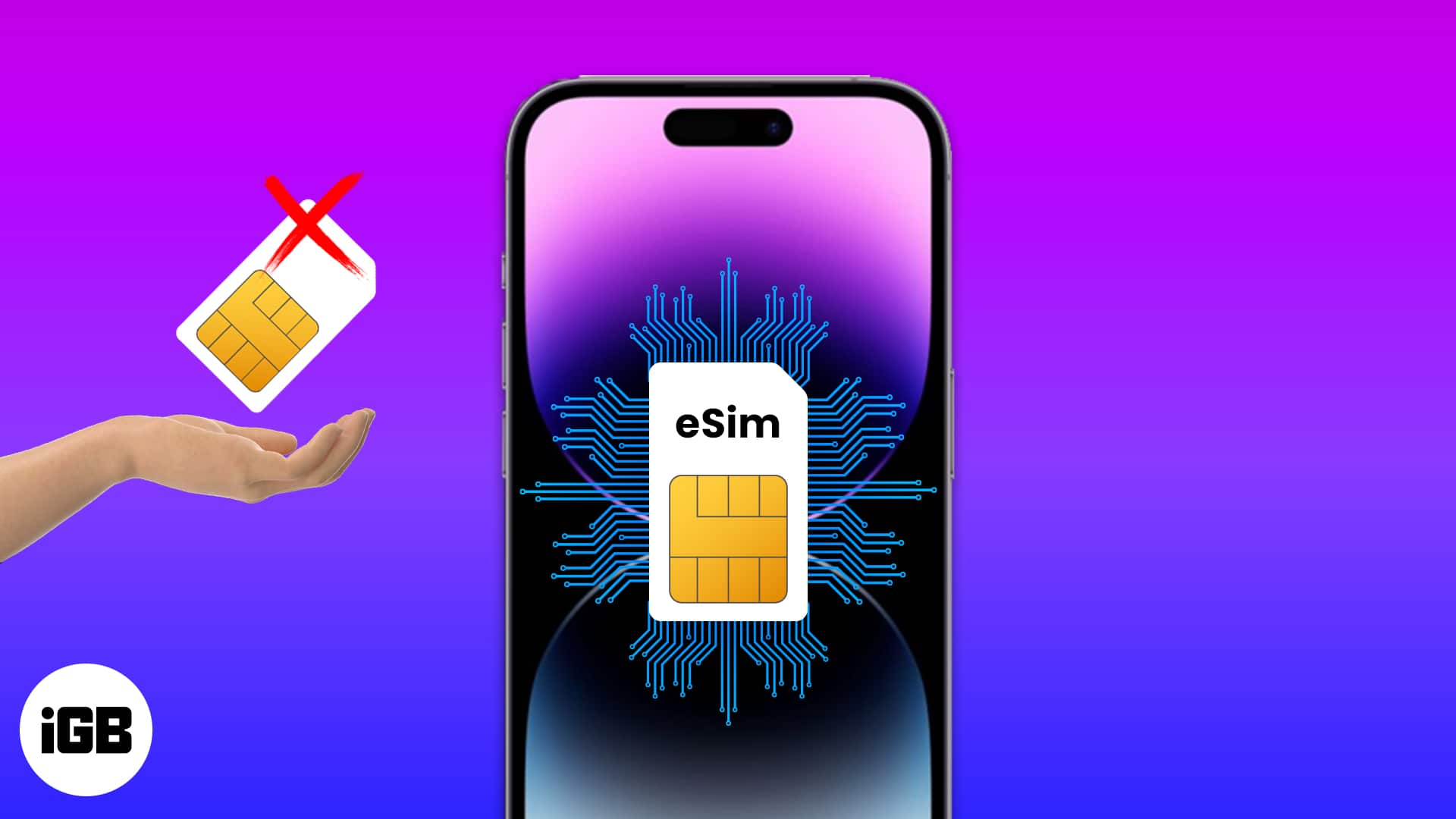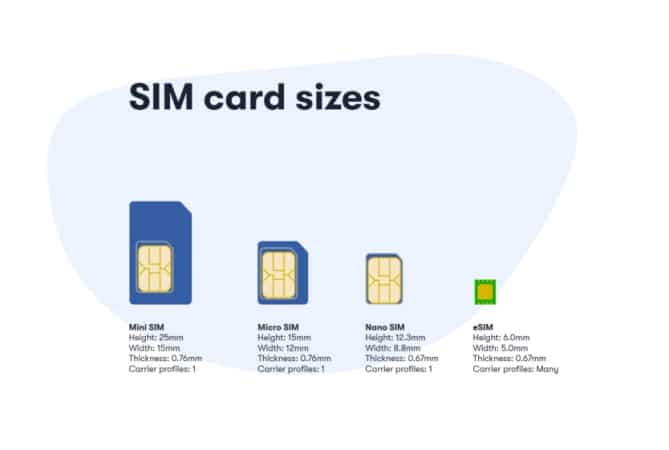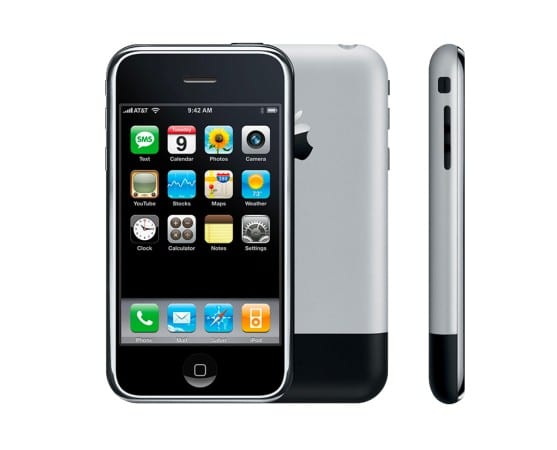I still remember the day when everyone was shocked to see the iPhone 7 series roll out without a headphone jack. It was, in a way, fuelling the chances of the iPhone becoming portless.

Years later, we still have the same questions, analyses, and thoughts about a portless iPhone. Thanks to Apple’s decision to make the iPhone 14 series eSIM-only for the US market. Apple promises a seamless future with eSIM. At least, that’s what it is hoping for.
This raises many doubts for me: will Apple make the industry follow them just like they did back in the day by removing the headphone jack? Or is it the first step to the highly anticipated and rumored portless iPhone? And above all, will Apple be successful with its eSIM movement? Join me as I explore all the possibilities around the eSIM-only iPhone 14 for the US market.
What is an eSIM?
eSIM, as the name suggests, is an electronic version of the Subscriber Identification Module (SIM). The eSIM is directly integrated into your smartphone, and you won’t ever have to interact with it physically.
All things (well, almost everything) you used to do with the physical SIM, such as changing numbers or switching to other networks, are also possible with eSIM. We already have a detailed guide if you want to know more about how to activate its eSIM on iPhone and how to fix if eSIM not working on iPhone?

Is life going to be ‘SIM’ple now?
Since most of our experience with the “e” version of things has been great, you might expect the same with eSIMs. Before I share my thoughts further, you can land on your own opinion by looking at the pros and cons of eSIM.
The pros you get to enjoy
- Doesn’t waste space: Yeah, it sounds Similar to what brands said when they removed the headphone jack to save space. But think again. Since smartphones now come with bigger and better hardware, every bit of real estate is just as precious.
- Secure: There have been many situations where SIM cards get stolen and used by thieves for malpractices. Things can get even worse if they can fool 2FA logins with your SIM and access your accounts. Well, that worry is now thrown out of the window!
- Track your device: Speaking of device theft, we need to address this huge benefit that eSIMs have. Since there’s no physical SIM to be removed, the phone can be tracked. Furthermore, we might see some FindMy -like features introduced by carriers to lure consumers.
- Store multiple SIMs: For people who have to carry multiple devices to use multiple SIMs, this will be a huge relief. Now, the iPhone 14 can host up to 8 eSIMs! It’s still great! Remember that you can only use 2 active eSIMs at a time.
- Easier switching: While eSIM is now a digital version of the SIM, it is expected that you would be able to technically switch to other networks or change numbers without much trouble. Unfortunately, a lot of it is at the mercy of your carrier. More on that later.
- Won’t be physically damaged: I was once swapping SIMs between my devices, and after inserting SIM into one device, I lost the other. Turns out it was safe inside my pocket. But since I remember a starfish, I spent the entire day searching. With eSIM, this won’t be happening anymore, and there is no need to worry about damaging the SIM or the SIM tray.
The cons that will kill the joy
While the eSIM tech has been around for quite some time, it is nowhere close to being called matured or perfected. As expected, it comes with unwanted issues. These include:
- Activation issues
- Switching issues
- Transfer issues
While I’m pretty sure carriers will address the issues mentioned above once the user base grows. Even after that, there are some issues that you might continue to face.
- Unsupported careers: While Apple, in their iPhone 14 keynote, said that there are over 400 carriers across 100 countries that support eSIM currently, it is still a small number. Don’t believe me? Take a look at Apple’s page on eSIM-supported carriers for iPhone.
You will understand that only a few carriers currently have full-fledged support for eSIM services. And if you are using the service of any of the following US network carriers, you are left with no other option than to switch your carrier if you want to use eSIM on your iPhone.
- Issues while switching to Android: While switching eSIMs between one iPhone and another is not that hard, you will have to contact your carrier if you want to switch to an Android flagship with an eSIM. It will be interesting to see if this process will be ‘SIM’plified or not as time passes.
- What if you break your device? Then, my friend, you are in for a ride. You won’t be worried about switching to another device with a physical SIM. Just take out the SIM, and put it into any other device.
But with eSIM, you are in for additional steps, such as contacting the carrier and going through all the processes of switching eSIM between devices. The last time I checked, that was time-consuming rather than time-saving.
eSIM on iPhone: It’s what Steve Jobs wanted
The community is divided between two sides, one supporting Apple and the other criticizing. But I am pretty sure Steve Jobs would be happy with this decision. Why? Because he never wanted to include the SIM card tray in the iPhone, mainly because of his design philosophy.

According to Tony Fadell, ex-Senior VP of the iPod division, Steve Jobs told the team working on the iPhone, “We don’t want another hole in it.” Jobs was inspired by Verizon’s CDMA service, which doesn’t require a SIM card; they’re directly linked to the carrier’s network.
Steve Jobs wanted to make the first iPhone exclusive to the CDMA network. But the problem with CDMA networks is that it’s locked to a carrier, which, as you might have guessed, would cause many headaches for the consumers who want to switch.
He wasn’t convinced until the team showed the market data that CDMA wasn’t widely adopted. This was one of the few Apple engineers had to oppose Jobs’ decisions.
So, if you are a loyal Steve Jobs fan, you will be happy that Apple is embracing the co-founder’s vision. While I am curious about how iPhone loyalists react to this new change, Apple seems pretty confident about the eSIM future.
Will Apple influence other OEMs to follow the same path?
If you recall the headphone jack period, most competitors were busy criticizing and making fun of Apple. But eventually, almost everyone followed the same path, at least for their flagships.
This was the first thing that went through my mind when Apple announced that the 14 Series would not have a SIM card slot for the US market. While it may not be as big as removing the headphone jack, since it was for all the units worldwide, the response is pretty much similar.
Moreover, the headphone jack removal boosted the slow-paced TWS market. Admit it or not, it was after Apple introduced AirPods that the entire TWS market started reinventing its products. Many new brands came forward with value-for-money products, thus drawing consumers’ attention to this segment like never before.
I think Apple has the same confidence with the eSIM situation too. While many criticize the current situation, I think they will expand the SIM-less iPhones to more markets in the coming years.
With eSIM, Apple is giving consumers more reasons to stick with the ecosystem. And since this is a good move by Apple, I’m pretty sure the competition will also try to retain their consumers, and eSIM could be a game-changer.
And ICYMI, that’s what has happened so far; OEMs have already started implementing their own version of the Dynamic Island. Apple innovates today; other OEMs follow tomorrow.
eSIM iPhone: A step towards a portless future?
I still don’t think Apple’s portless future will soon become a reality. Since they have removed physical SIMs from iPhone 14, carriers worldwide must embrace the eSIM future because it’s only a matter of time before other OEMs follow suit.
Apple still needs to figure out how they will replace the physical buttons and how effective the change would be. The past iterations from many brands didn’t go as well as expected. And while there’s MagSafe for charging, which for me is performing well, data transfer will still be an issue.
Since we all know Apple won’t take a daring step like this until they are fully confident about the quality and how well it will perform, I’m not sure if we should have high hopes for a portless iPhone. That being said, removing the physical eSIM for the US market is definitely a baby step toward a portless tomorrow.
Some common questions related to eSIM on iPhone
FAQs
No, eSIM is the tech used by many other smartphones and gadgets besides Apple. While Apple was one of the pioneers, many others have used eSIM on their devices.
As of now, there aren’t any extra costs to convert your physical SIM to eSIM.
Yes, you can use an eSIM without any internet connection. You only need the internet to activate or convert eSIM.
Yes. Just like a regular SIM, once you activate eSIM, it will also be equipped with a phone number.
Read more:

